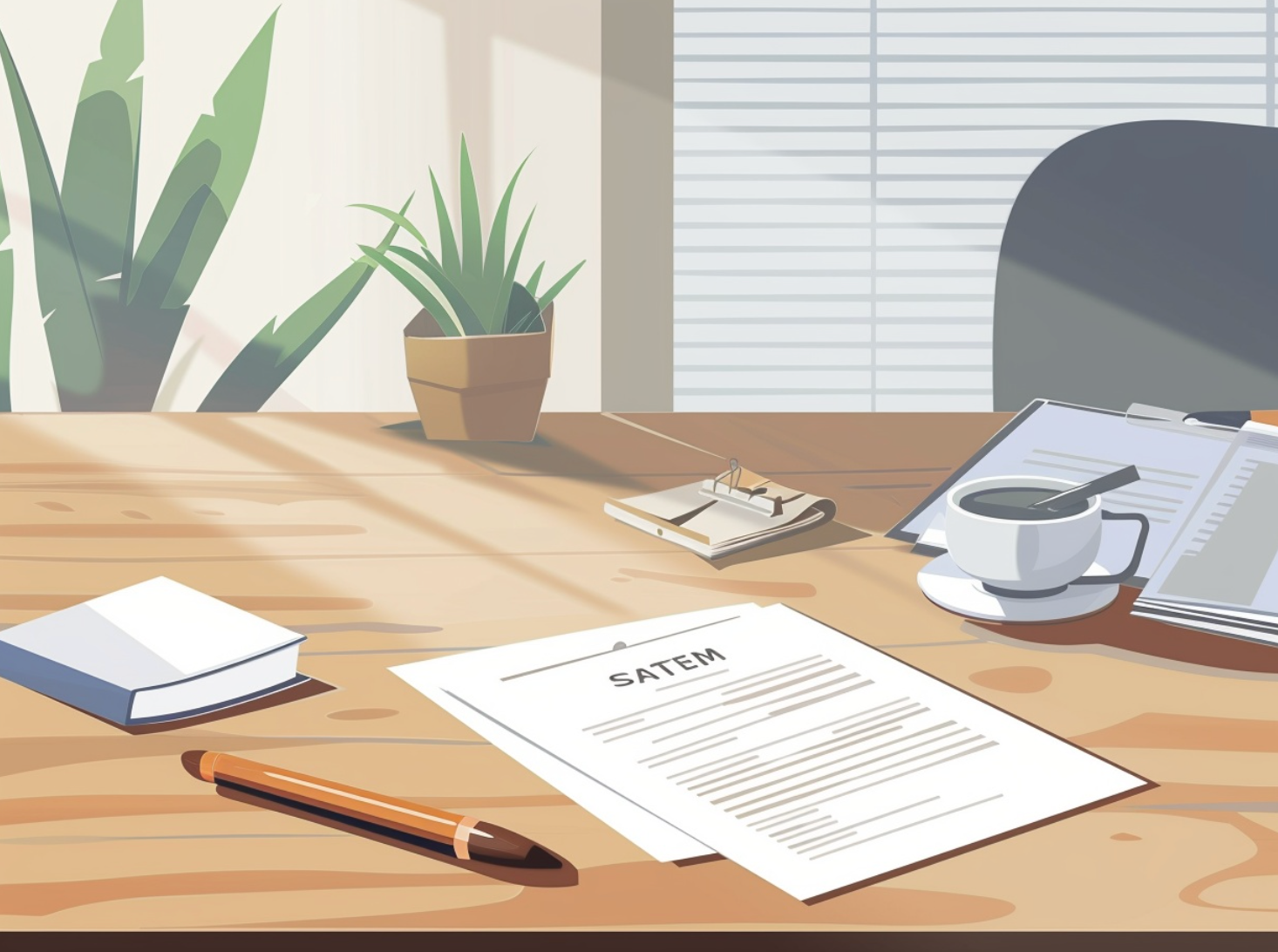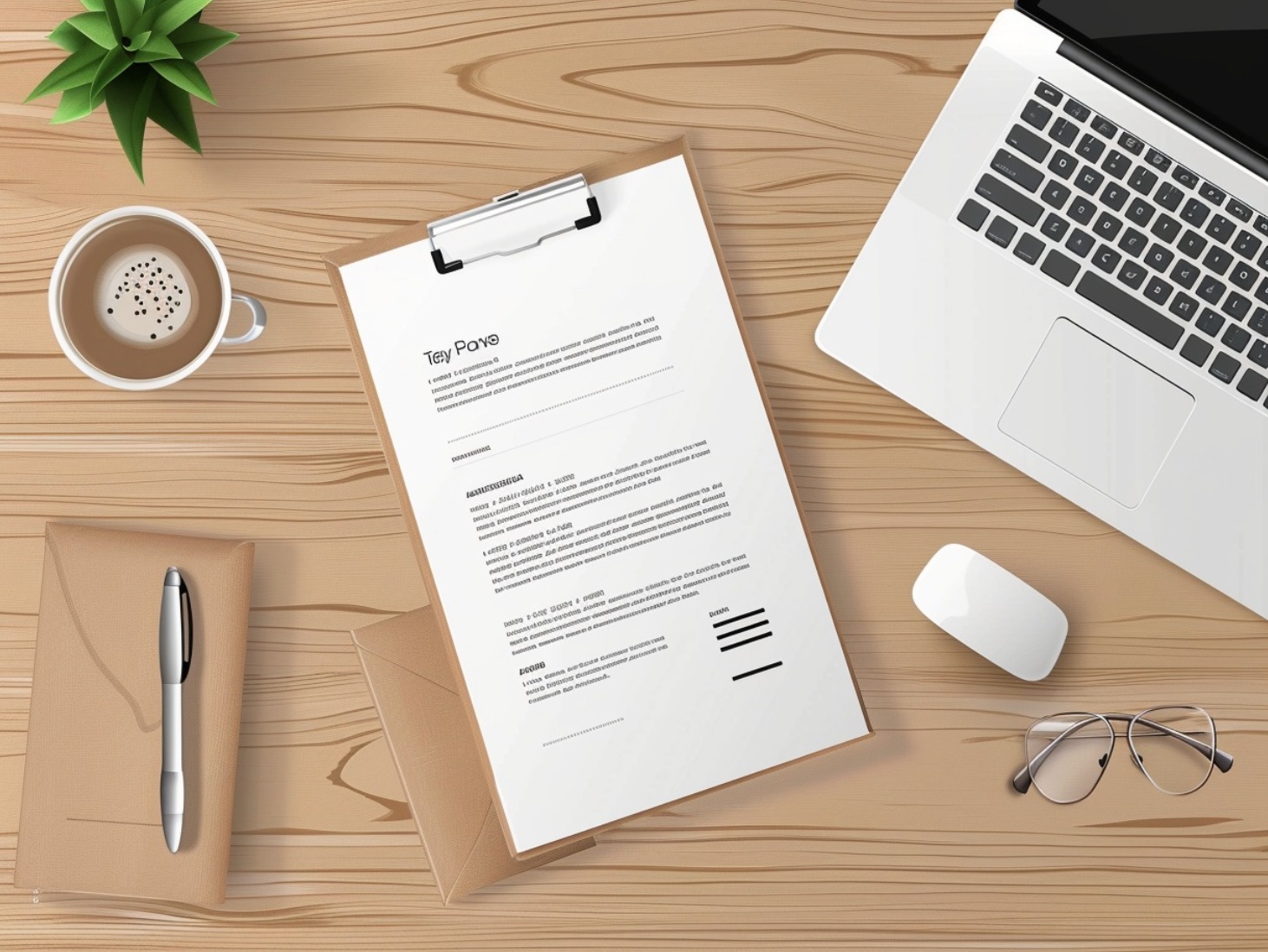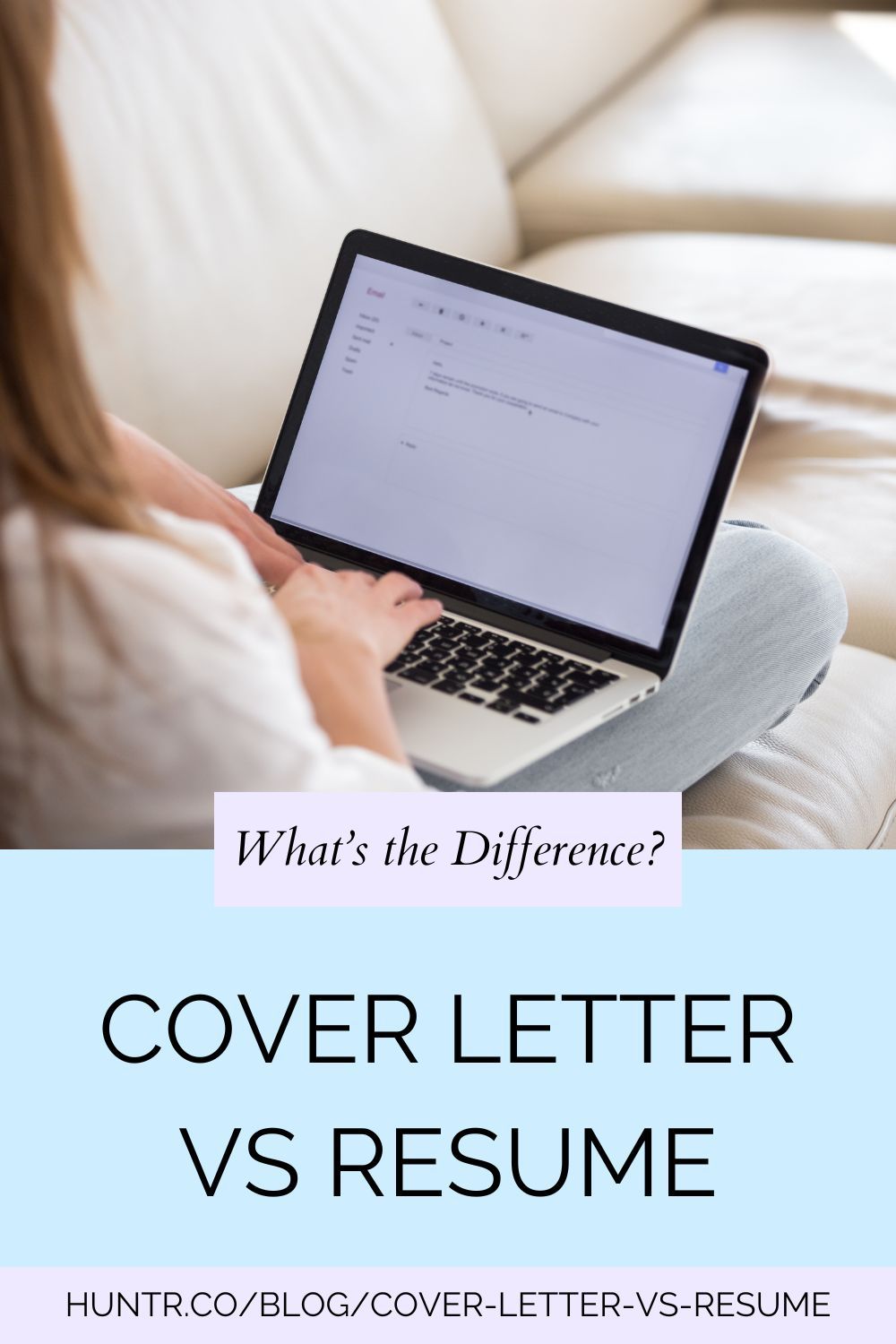During a job search, you’ll often be asked to apply with both a resume and cover letter. But if you’re new to the job search or if you don’t actively look for jobs often, you might be wondering what’s the difference between a cover letter and a resume? This post will help educate you on what both a resume and a cover letter are, and compare resume vs cover letter and how they’re the same, and compare cover letter vs resume and how they’re different.
Working on a resume or cover letter?
Sign up for Huntr to build your resume and cover letter with some AI help.
What is a resume?
A resume is a formal, one-to-two page document that articulates a detailed overview of your work history, skills, accomplishments, and education. The goal is to present your qualifications and credentials to a hiring manager hiring for a specific position to demonstrate your fit for the role. It’s the first impression hiring managers have of you as it’s the go-to document that hiring managers request for consideration.
What is a cover letter?
A cover letter is a one page informal and personalized letter that explains to a specific person on the hiring team who you are and why you’re the most qualified person applying for this role. You’ll use storytelling and persuasion to convince this hiring manager to give you an interview by sharing anecdotes about your experiences that go beyond the bullet points on your resume. It’s also an opportunity for you to showcase your personal flair with your writing to capture the attention of a hiring manager.
Resume vs cover letter: what’s the same?
1. Both used in the job search
When comparing cover letter vs resume, it’s important to know that they’re both important documents in the job search process. They can be used together to sell you as a candidate so you can land your next role. When searching for a job, most require these documents to better understand who you are, why you’re looking for a role, and how well qualified you are. They can also be used in conjunction with a LinkedIn profile to better understand who you are as a candidate. If you’re looking for a job, creating a resume and a cover letter for each role you apply for will give you a competitive advantage as recruiters do read these documents to assess whether or not to give you an interview.
2. They typically have a cohesive design
A resume and cover letter are often used together and as a result they often have a cohesive design that ties the two documents together. They might have the header and contact information in the same style or use the same color palette to unify the two documents together. Their designs are functionally different but there are typically elements in a resume and cover letter so that a hiring manager can see that the two documents go together for that candidate to create a unified look.
3. They both use similar keywords
A resume and cover letter both require keywords in order to pass through ATS filters. You’ll likely use similar keywords in your resume and cover letter, especially since most of the keywords will be related to your specific job. Every job has its own set of keywords. For example, a content writer will have keywords like writing, content, SEO, editing, and so on. You’ll want to use a tool that scans your job description for keywords that you should be adding to your resume and cover letter to ensure your documents pass through filters to land you in the interview pile. You can use Huntr’s job description keyword finder to help you find these keywords with ease.

Cover letter vs resume: what’s the difference?
1. They have different purposes
When comparing cover letter vs resume, it’s important to know they both serve different purposes. A resume is an overall one to two page summary of your work history, education, skills, and accomplishments. A cover letter is a one page introduction of who you are and why you’re a great fit for the role you’re applying to. It might better elaborate on the connection between the job posting and your qualifications to help hiring managers better understand why they should choose you specifically to be included in the interview process.
2. They have different formats
A resume format is different from a cover letter. A cover letter is an actual letter addressed to a hiring manager. A resume has sections and within sections, your accomplishments are written in bullet points in fragments. In a cover letter, you’ll need to be mindful of grammatical rules. And in a resume, it has its own set of rules. You don’t need to put periods at the end of a bullet point, it’s actually customary not to include one unless it’s two sentences long. A resume might also include some lists, such as within the skill section. Whereas, when you mention a list in a cover letter, you’ll need to use commas to separate them in your letter as you would when structuring a sentence. So, overall, when comparing resume vs cover letter, they do use different formats.
3. They have different content
When comparing cover letter vs resume, it’s important to know they both use different content. A resume is a walkthrough of your work history in recent years. LinkedIn might include every job you’ve ever held. But your resume is only your most recent work history, so you don’t need to include jobs from over a decade ago. A cover letter is a formal letter explaining what interested you in the role, why you’re looking for a job right now, explains any employment gaps, and further explains the connection between the role you’re applying to and your qualifications. A cover letter complements your resume for hiring managers.
4. They’re personalized differently
A cover letter and resume are personalized differently. A resume might be personalized by including tailored experiences and keywords to the job posting, includes relevant work experience, includes key skills, and more. A cover letter is a personalized letter directed to the hiring manager or recruiter for the role. It actually addresses a person specifically. It also draws connections between the role and your qualifications to help that person see that you’re the ideal candidate for the role. You might personalize the cover letter with a story or anecdote about who you are and how that ties into the company’s values or needs.
5. They have different lengths
A resume and cover letter often have different lengths. A resume is often a one to two page document, though most people aim for one page. It’s scannable in design, so it’s not walls of text but easy-to-read bullet points. A cover letter is written in paragraph format, so it’s often just under a page in length covering about 250 to 400 words. Whereas a resume might be between 450 to 600 words. It’s more common for a resume to be longer than a cover letter as it highlights more of your relevant, tailored experiences for a role. It’s also the key part of the application process so more time needs to be invested into it.

6. They have different tones
When comparing cover letter vs resume, it’s important to note they have different tones from each other. A resume is a more professional, formal, and fact-based document. Whereas a cover letter is more casual, conversational, and engaging in nature. A resume might use hard numbers, bullet points, and objective language. And a cover letter uses a mix of story telling and persuasiveness to entice you into considering them for the next stage of the hiring process.
7. One is required, another is recommended
When comparing resume vs cover letter, it’s important to see the difference between whether or not they’re required. It’s hard finding a job that doesn’t require a resume as a minimum to be considered for a role. Even to work at fast food restaurants or in retail stores, you’ll need to present a resume to be considered for a position at that company. Beyond this, some hiring managers will mandate a cover letter. But that cover letter isn’t going to be the most important document in the decision making process. After all, cover letters are often recommended to be added rather than mandated. A cover letter is merely supplemental information to help hiring managers in their decision making process.
8. They have different designs
While we mentioned earlier that cover letters and resumes have a cohesive design to tie them together, they do look visually different from each other. A resume is often structured with headings, such as summary, work experience, education, or skills. The design is all about scannability, and so the use of bullet points is standard practice on this type of document. A cover letter is a formal letter so it contrasts with the bullet point design of the resume. You’ll likely find one-inch margins with text going from wall to wall in a cover letter. A cover letter’s written content is more closely condensed like you’d find in a book or a formal letter. Readability is still important in a cover letter but it’s not as easy to scan.
9. They have a different target audience
A resume and a cover letter have different target audiences. A resume is a document that’s seen by the recruiter, hiring manager, hiring team, and all other stakeholders in the decision making process. So, if one of your interviews requires you to “meet the team” that whole team will likely be reading your resume before meeting with you to ask you specific questions. A cover letter is often a document for the hiring manager who will be making the hiring decision. It’s personalized. Maybe you’ll write one for a specific recruiter or person who will make the decision of whether or not to include you in the next round of interviews. But since cover letters boil down to personalization, it’s typically written with one person in mind rather than a broader audience. Some people use the same resume for multiple companies (we don’t recommend this, but it happens). But your cover letter is always tailored to a specific person at a company.
10. They use different pronouns
When doing a comparison of cover letters vs resumes, understand that they both use different pronouns. In a cover letter, you’ll be using the word I a lot as you’re doing story telling about yourself and persuading someone else to hire you. You might also use the word you. Overall, first-person and second-person pronouns will be used in your cover letter. However, in your resume, you won’t use pronouns at all. You’ll write formal bullet points that objectively highlight your experience without mentioning yourself or addressing other people. Even when you’re talking about your work experience in relation to people it’s kept formally. For example, “Led a team of six high-performing individuals and successfully hit targets of $1,000,000” is a formal way to talk about others on a resume. Whereas, a cover letter would be written differently, such as “I helped coach and mentor a team of six high-performing contributors and we successfully hit targets of $1,000,000.”
11. One requests an interview, the other has no ask
In a cover letter, you’ll have a call-to-action that asks the hiring manager to consider you for an interview. Whereas in a resume, you’ll have no call-to-actions or requests for interviews. The document is a standalone one that simply highlights all your credentials and qualifications but makes no requests. In a cover letter, you might write, “I know that I would thrive in this role if given an opportunity, all I’m asking for is a chance to prove myself in an interview to be considered for this position.”
12. One explains things in detail, the other is brief
When comparing cover letter vs resume, a cover letter explains things in greater detail than a resume. A resume is brief, to the point, bullet form content. A recruiter might see an employment gap in your resume, but a cover letter explains what happened there. For example, you might write that you went through a corporate restructuring. This will help clarify that you didn’t do anything wrong and leaves little to the imagination. A cover letter is your opportunity to further explain your qualifications, employment gaps, or any weird quirks about your resume honestly so you can be considered for a role.
Time to write them
Now that you know what a resume and cover letter is and how they’re similar and different, it’s time to create your own for your job search. Since you’re still new to the world of creating resumes and cover letters, you can use Huntr, an easy to use AI resume builder with a cover letter generator that’ll allow you to create your own resumes and cover letters with ease. Sign up for Huntr today!

Get More Interviews, Faster
Huntr streamlines your job search. Instantly craft tailored resumes and cover letters, fill out application forms with a single click, effortlessly keep your job hunt organized, and much more...
AI Resume Builder
Beautiful, perfectly job-tailored resumes designed to make you stand out, built 10x faster with the power of AI.
Next-Generation Job Tailored Resumes
Huntr provides the most advanced job <> resume matching system in the world. Helping you match not only keywords, but responsibilities and qualifications from a job, into your resume.
Job Keyword Extractor + Resume AI Integration
Huntr extracts keywords from job descriptions and helps you integrate them into your resume using the power of AI.
Application Autofill
Save hours of mindless form filling. Use our chrome extension to fill application forms with a single click.
Job Tracker
Move beyond basic, bare-bones job trackers. Elevate your search with Huntr's all-in-one, feature-rich management platform.
AI Cover Letters
Perfectly tailored cover letters, in seconds! Our cover letter generator blends your unique background with the job's specific requirements, resulting in unique, standout cover letters.
Resume Checker
Huntr checks your resume for spelling, length, impactful use of metrics, repetition and more, ensuring your resume gets noticed by employers.
Gorgeous Resume Templates
Stand out with one of 7 designer-grade templates. Whether you're a creative spirit or a corporate professional, our range of templates caters to every career aspiration.
Personal Job Search CRM
The ultimate companion for managing your professional job-search contacts and organizing your job search outreach.

